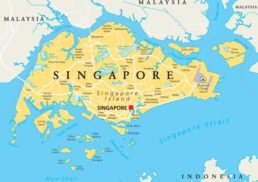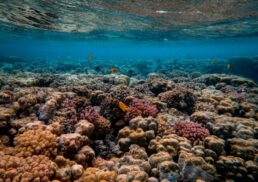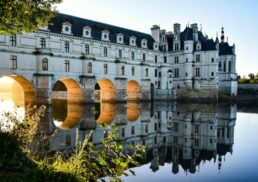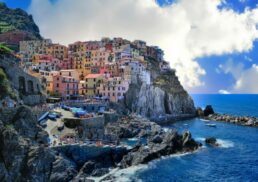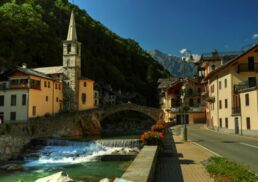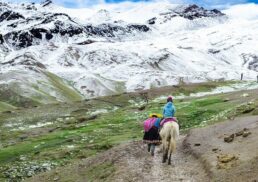Where’s the Netherlands? Located in northwestern Europe, the Netherlands is flanked by Germany, Belgium, and the North Sea. In this guide, we delve into its strategic European location and how it shapes the country’s identity and role on the world stage.
Table of Contents
Key Takeaways
The Netherlands is characterized by its geographical diversity, with most of the country being flat and below sea level, and includes territories in the Caribbean—thus, it is both densely populated and geographically expansive.
Politically, the Netherlands operates as a constitutional monarchy and a parliamentary democracy, with a rich history intertwined with its geography, such as its role in the Low Countries and foundational moments like the end of the Eighty Years’ War.
Dutch culture is globally influential in various domains, including art, entertainment, and sports, with notable figures across these fields and a significant commitment to environmental sustainability and tackling challenges like air pollution and climate change.
Geographic Spotlight: The Netherlands in Context
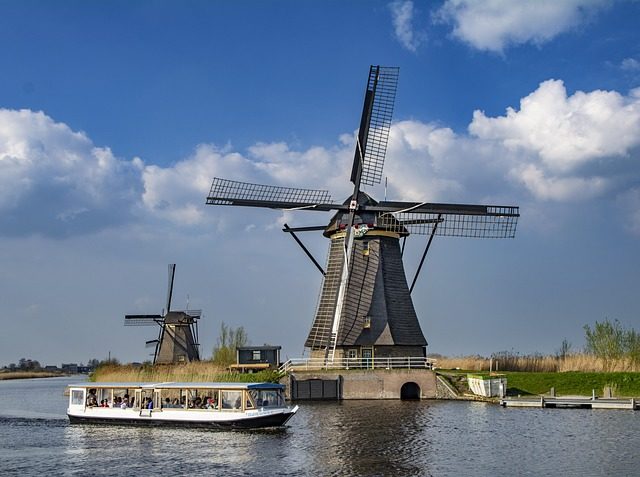
Nestled in northwestern Europe, the Netherlands is a country that dazzles with its geographical diversity and uniqueness. Known for its:
flat landscape characterized by extensive canals
tulip fields
windmills
cycling routes
The Netherlands, with its netherlands bordering countries, is a visual treat for its inhabitants and visitors alike. The country’s geographical formation, partially due to the remnants of the last ice age, adds an intriguing touch to its natural allure. With a land area of 33,481 km2, the small yet densely populated country ranks as the 33rd most densely populated country in the world, adding to its uniqueness.
However, the geographic spotlight on the Netherlands is not just limited to its European territories. This small yet influential nation has a presence even in the Caribbean, further broadening its geographical expanse. Now, let’s delve deeper into the Dutch provinces and territories and the major cities that shape the country’s geographic, economic, and cultural landscape.
Dutch Provinces and Territories
The European Netherlands is divided into twelve provinces, each having its unique charm and significance. Among them, North Holland and South Holland are the most well-known, housing major cities like Amsterdam, The Hague, and Rotterdam. However, it’s interesting to note that the Netherlands is much more than just ‘Holland’. In fact, many Dutch people prefer the country to be called the Netherlands, as Holland only comprises two of the twelve provinces, including the South Holland Province, representing 38% of its total population. The southern Netherlands, on the other hand, offers a different experience with its own unique attractions and charm.
The Dutch territory extends to the Caribbean as well, with three special municipalities – Bonaire, Sint Eustatius, and Saba. These islands were incorporated as part of the Netherlands upon the dissolution of the Netherlands Antilles, adding a unique Caribbean flavor to the largely European nation. The Caribbean Netherlands has its linguistic uniqueness, with Papiamento being an official language in Bonaire, and English having official status in Saba and Sint Eustatius.
Major Cities and Capital
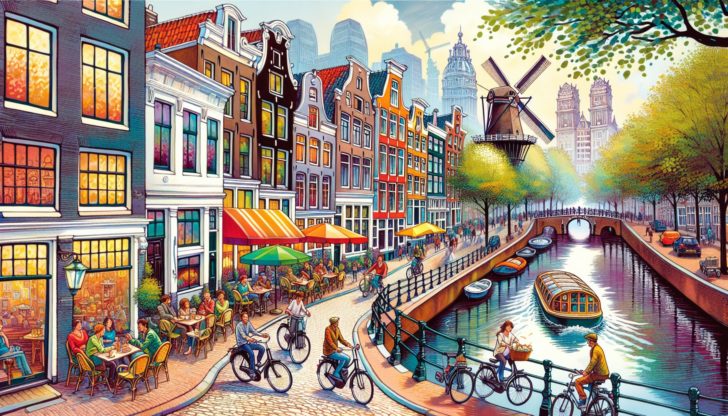
Every Dutch province boasts vibrant cities that contribute to the country’s cultural and economic landscape. Among them, Netherlands capital city Amsterdam stands tall as the capital city, serving as the country’s financial and business capital. This vibrant city, famous for its artistic heritage, elaborate canal system, and narrow houses with gabled facades, is a testament to the city’s Golden Age legacies.
However, the Netherlands’ urban charm is not confined to Amsterdam. Other major cities like Rotterdam, The Hague, and Utrecht each contribute significantly to the country’s cultural and economic landscape. These cities represent the Netherlands’ urban dynamism, each offering a unique blend of history, culture, and modernity.
Navigating the Low Countries
As you delve deeper into the geography of the Netherlands, you’ll come across the term ‘Low Countries’. But what does this term mean? Traditionally, the ‘Low Countries’ refers to the region encompassing the Netherlands, Belgium, and Luxembourg. This term is associated with the coastal Rhine–Meuse–Scheldt delta in Western Europe, highlighting the geographical position of these countries as being ‘lower’ or situated lower than the surrounding regions. Thus, ‘Nether’ in the Netherlands and ‘Belgica’ in Belgium reflect their geographic position.
The use of ‘Low Countries’ to describe this region dates back to the era of the Carolingian Empire, signifying its importance within that empire. Following the division of the Carolingian Empire, the Netherlands became part of Middle Francia and subsequently came under the control of the Holy Roman Empire. During its time under the Holy Roman Empire, the Netherlands did not experience centralization but rather a diverse makeup of various lordships such as Brabant, Holland, and Friesland. Thus, the ‘Low Countries’ is not just a geographical term but also a historical one, bearing witness to the region’s rich and complex past.
The Heart of Western Europe
The Netherlands’ strategic location within the European Union and close proximity to other European countries establishes it as a central hub for trade and international relations. This is reflected in:
The bustling activity at Amsterdam Schiphol Airport, the primary international gateway of the Netherlands
Ranked as the third busiest airport in Europe, it mirrors the country’s extensive global connectivity
In 2023, Dutch airports, reflecting their extensive connectivity, handled a whopping 71 million air passengers.
With its position in the heart of Western Europe, the Netherlands serves as a bridge connecting various European countries, facilitating trade, commerce, and cultural exchange. This central role the Netherlands plays is not just geographically significant but also economically pivotal. It reflects the country’s influence and strategic importance within the European Union and beyond.
Beneath the Waves: Land at Sea Level
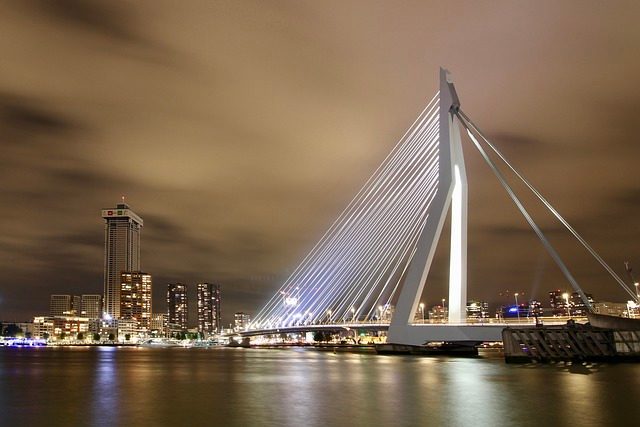
One unique geographical feature of the Netherlands is that 26% of its area lies below sea level. This necessitates highly efficient flood control strategies to protect these vulnerable regions. Historically, the Dutch relied on windmills to manage water levels. However, modern electric and diesel pumping stations now play a key role in maintaining the elaborate drainage systems of large polder areas.
After a disastrous flood in 1953, the Netherlands embarked on the Delta Works project. This series of constructions was designed to significantly reduce the risk of flooding in South Holland and Zeeland. The project, primarily completed between 1958 and 1997, is a testament to Dutch engineering prowess and their adaptive strategies to their unique geographical challenges.
To adapt to potential threats posed by climate change, the Netherlands implemented the Room for the River project. This innovative project creates designated areas that can be safely inundated to protect other regions from flooding. Thus, the Netherlands’ unique geographical situation below sea level has led to pioneering innovations in water management, setting an example for other low-lying regions worldwide.
A Brief on Dutch History
The history of the Netherlands is as diverse and intriguing as its geography. Following the end of Roman, Frank, Burgundian, and Habsburg rule, the Dutch Republic was formed with the secession from Spain in 1648. This marked the end of the Eighty Years’ War, a significant event in Dutch history.
Despite maintaining neutrality during World War I, the Netherlands remained neutral until it was invaded by Nazi Germany in 1940 during World War II. The country suffered severe hardships during this period, including a devastating famine known as the ‘Hunger Winter’.
After the fall of Napoleon, the United Kingdom of the Netherlands was created in 1815. This included present-day Belgium and Luxembourg. However, Belgium seceded in 1830, leading to the formation of the modern Dutch state.
Thus, the history of the Netherlands is a fascinating saga of resilience, transformation, and evolution, reflecting the nation’s spirit and shaping its present.
Learn more, visit History of the Netherlands.
Political Landscape of the Kingdom
The political landscape of the Netherlands is characterized by its structure as a constitutional monarchy with a parliamentary democracy. The Kingdom of the Netherlands, with King Willem-Alexander serving as the current monarch, is a sovereign state. The King plays a key role in representing the Kingdom both domestically and internationally and is involved in unifying, representational, and motivational duties.
As part of his constitutional role, the King performs the following duties:
Delivers the Speech from the Throne
Signs Acts of Parliament and royal decrees
Ratifies international treaties
Appoints government officials
Although the King is a component of the government, his role within the Council of State is mainly symbolic, and he does not partake in its main activities.
The ministers, on the other hand, are responsible for the actions of the government and are held accountable to the Dutch Parliament, thereby asserting the principles of a parliamentary democracy. King Willem-Alexander also has regular interactions with Prime Minister Mark Rutte, ensuring ongoing communication between the monarchy and the government. Thus, the Netherlands’ political landscape is a balanced interplay between the monarch and the elected government, reflecting its principles of constitutional monarchy and parliamentary democracy.
Language and Society in the Dutch Realm
The language landscape of the Netherlands is as diverse as its geography. The official language is Dutch, and a significant portion of the population is bilingual, with 90% able to converse in English. In addition to English, a substantial number of the Dutch population can converse in German (71%) and French (29%).
There is also recognition for regional languages in the Netherlands, including:
Frisian, which is recognized as an official regional language in the province of Friesland
Dutch Low Saxon and Limburgish, which also have official recognition as regional languages
Dutch Sign Language (Nederlandse Gebarentaal), which has official recognition, underscoring the country’s acknowledgment of language diversity.
Along with its language diversity, the Netherlands also maintains a tradition of social tolerance. This reflects in its broader societal attitudes and cultural values and is a cornerstone of Dutch society.
The Economy and Natural Wealth
The Dutch economy is as diverse as the country itself. The Netherlands’ Golden Age in the 17th century established a wealthy tradition in trade, a legacy that continues today with the EU, primarily with partners like Germany, Belgium, and others. The Port of Rotterdam, the largest seaport in Europe, plays a pivotal role in trade, processing 1.65 billion tons of goods, largely facilitated by shipping and road transport.
The discovery of substantial natural gas reserves in the 1950s, along with petroleum from North Sea drilling, constitutes key Dutch national wealth. The Dutch agricultural sector is highly productive, with exports reaching €94.5 billion in 2019, making it a cornerstone of the Netherlands’ economy.
Key industries in the Netherlands include:
Foodstuffs
Chemicals
Metallurgy
Machinery
Services
These industries, combined with the duties provided to the EU budget, solidify the economic framework of the Netherlands. The country also makes significant contributions to the EU in terms of infrastructure development, having the largest inland shipping fleet, and a petrochemical industry linked with general cargo handling in Rotterdam.
Thus, the Dutch economy, robust and diverse, plays a crucial role in the country’s prosperity and its global standing.
Environmental Insights: From Air Pollution to Water Management
The Netherlands, while being a thriving nation, faces several environmental challenges. Air pollution in the country is largely contributed by agriculture, traffic, and industry, leading to significant levels of nitrogen oxides and particulate matter. Since the 1990s, there has been a 75% decrease in the number of flying insects in the Netherlands, signifying a severe impact on the environment.
To counter these challenges, governmental and private organizations in the Netherlands are actively involved in forming nature reserves. The Netherlands also hosts about 30% of all recharge stations in the European Union, reflecting its commitment to environmental sustainability.
Between 2008 and 2019, the Netherlands has achieved significant progress by doubling the proportion of energy generated from renewable sources. This growth has been driven by increased investment in offshore wind and rooftop solar. Despite progress towards renewable energy, the Netherlands remains heavily reliant on fossil fuels, with a concentration of energy- and emission-intensive industries.
To address these environmental issues and adapt to potential threats posed by climate change, the Dutch government has set a reduction goal of 49% in greenhouse gas emissions for 2030 compared to 1990 levels. Thus, while grappling with environmental challenges, the Netherlands is also making concerted efforts towards environmental sustainability and climate resilience.
Military and Defense: The Dutch Approach
The Dutch Ministry of Defence oversees the country’s military and defense system. It includes:
The Central Staff
Four armed forces services
The Defence Materiel Organisation
The Joint Support Command
The Minister of Defence heads the Defence Organisation, with civil leadership duties managed by the Secretary-General. The Ministry employs over 70,000 personnel, underlining the scale of the country’s defense system.
The Chief of Defence is responsible for the preparation and execution of the various operations carried out by the armed forces services. Thus, the Dutch military and defense system is a well-structured and strategic entity, playing a crucial role in ensuring the country’s security and contributing to its international commitments.
Connectivity and Transportation
The Netherlands boasts a highly developed transport infrastructure, which is the fourth best globally according to the World Economic Forum’s Global Competitiveness Report for 2014-2015. The Dutch road network reaches approximately 139,000 km, featuring 3,530 km of expressways, making it one of the densest in the world. This significant volume of travel on Dutch roads, with over 200 billion km covered annually, highlights the country’s extensive connectivity and infrastructure development.
The Dutch railway network is among the busiest in the EU, with major stations like Amsterdam Central and Rotterdam Central recently upgraded and expanded. Public transportation accounts for 13% of the distance traveled in the Netherlands, with trains offering frequent services, particularly busy lines with up to eight trains an hour. Light rail systems like RandstadRail and Utrecht’s fast tram complement the national rail and public transit networks.
Cycling is also a popular mode of transportation in the Netherlands. With at least 18 million bicycles estimated to be in the country and about 35,000 km of separate cycle tracks, the Netherlands is a paradise for cyclists. For international connectivity, the Netherlands has maritime borders with key European countries and a major international airport, Schiphol, serving as a significant European hub.
Thus, the Netherlands’ connectivity and transportation infrastructure is a testament to its advanced urban planning and commitment to sustainable mobility.
Cultural Imprints: Arts, Entertainment, and Sports
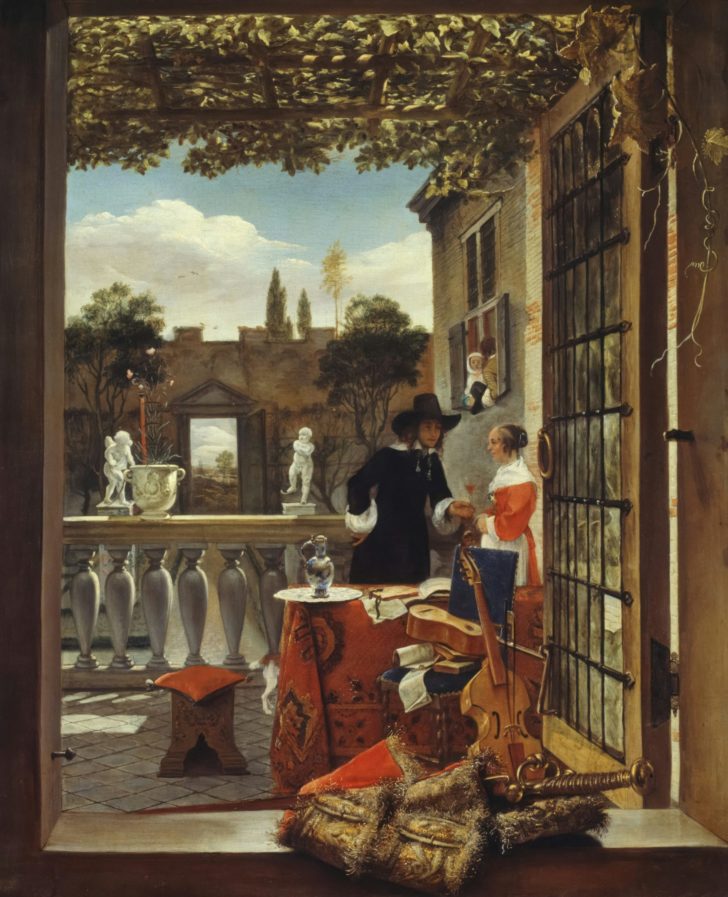
The Netherlands has a rich cultural imprint in the fields of art, entertainment, and sports. The country has an illustrious history in art, with world-famous painters like Jan Vermeer, Rembrandt van Rijn, Piet Mondrian, Vincent van Gogh, Carel Fabritius, and Hieronymus Bosch. These artists’ masterpieces, such as ‘The Girl with the Pearl Earring’, ‘The Night Watch’, ‘Composition No. III’, ‘Starry Night’, ‘The Goldfinch’, and ‘The Garden of Earthly Delights’, have left an indelible mark on the world of art.
In the field of entertainment, Dutch film directors have gained international recognition. Some notable Dutch film directors include:
Paul Verhoeven
Jan de Bont
Anton Corbijn
Dick Maas
Fons Rademakers
Bert Haanstra
Joris Ivens
Theo van Gogh
These directors have contributed significantly to the global influence of Dutch media companies.
Dutch sports teams have also achieved remarkable success. Some notable achievements include:
The women’s national football team’s achievements in the 2019 World Cup and 2017 European Championship
The field hockey team’s numerous World Cup victories
The baseball team’s dominance in the European championships
These achievements reflect the country’s sporting prowess.
Prominent Dutch sports figures include:
Johan Cruyff
Marco van Basten
Ruud Gullit
Johan Neeskens
Max Verstappen, the first Dutchman to win a Grand Prix and a Formula One World Drivers Championship, is another testament to the country’s sporting achievements.
Thus, the cultural imprints of the Netherlands in the fields of art, entertainment, and sports are as diverse and vibrant as the country itself.
Summary
The Netherlands, a small country in northwestern Europe, is a fascinating blend of unique geography, rich history, diverse culture, and a thriving economy. From its position below sea level to its vibrant cities and provinces, the Netherlands is a country that constantly surprises and enchants. Its history, marked by resilience and transformation, tells a tale of a nation that has evolved over centuries. The Dutch political system, a balanced interplay between a constitutional monarchy and a parliamentary democracy, reflects the country’s commitment to democratic values.
Despite facing environmental challenges, the Netherlands is making concerted efforts towards environmental sustainability and climate resilience. Its advanced transportation infrastructure and global connectivity make it a key player in the international arena. And finally, the rich cultural imprints of the Netherlands in the fields of art, entertainment, and sports reveal a country that is pulsating with creativity and talent. As we conclude this exploration of the Dutch nation, we hope this fascinating journey has inspired you to delve deeper into the wonders of the Netherlands!
Frequently Asked Questions
What is the official language of the Netherlands?
The official language of the Netherlands is Dutch. Additionally, about 90% of the population can converse in English, making it widely spoken as well.
What is unique about the geography of the Netherlands?
The unique geography of the Netherlands includes 26% of its area lying below sea level, leading to the need for efficient flood control strategies to protect these vulnerable regions.
What is the political structure of the Netherlands?
The political structure of the Netherlands is a constitutional monarchy with a parliamentary democracy, and King Willem-Alexander is the current monarch.
What are some of the environmental challenges faced by the Netherlands?
The Netherlands faces environmental challenges including air pollution, nitrogen pollution, and threats from climate change. These factors have significant impacts on the country’s environment and public health.
What are some of the cultural imprints of the Netherlands?
The Netherlands has made significant cultural imprints through its renowned painters, film directors, and successful sports teams and athletes. These have left a lasting impact on the global stage.



